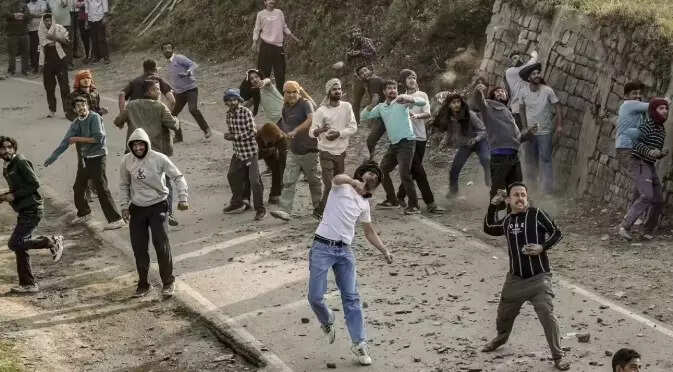Stone Pelting for the Goddess: Dhami’s ‘Pathron Ka Mela’ Keeps 300-Year Tradition Alive
Just 30 km from Shimla, Dhami village comes alive every year with the ‘ Pathron Ka Mela ’, a stone-pelting fair that has defied time and modern reform. Celebrated the day after Diwali, the festival is not just about throwing stones; it’s a cultural expression of devotion to the goddess Maha Kali. Hundreds gather at the local sports ground, not just as spectators but as keepers of a custom that is older than memory. For the locals, the tradition is sacred, and participation is a mark of pride.

When Stones Meet Faith
The fair begins only after the priest of the Narsingh Devta temple reaches the Kali Devi temple, accompanied by traditional musicians. Once the ritual is complete, villagers from Halog and Jamog position themselves on opposite sides of a circular stone structure. The air fills with flying pebbles as the two sides begin pelting stones at one another. The stone-throwing continues until someone is injured and bleeds. That blood is then offered as a tilak to the goddess, a symbolic gesture that completes the ritual.A Strike of Honour
The injured take pride in bearing their wounds. This year, the first to be hit was 60-year-old Subhash, a recently retired SHO. He considered himself fortunate to have been injured and vowed to continue the tradition in the years to come. In Dhami, injuries during the fair are worn like medals. The injured are celebrated, not pitied. It’s a display of both courage and deep-rooted spiritual belief. Unlike reckless brawls, this event follows a structured ritual and is regarded with the utmost seriousness.Royal Roots and Community Spirit
The origins of the ‘Pathron Ka Mela’ go back more than 300 years. It’s said the fair replaced the brutal practice of sati, offering a more symbolic form of sacrifice. The event begins with members of the local royal family performing a puja and casting the first stone. It’s not just a fight between two villages; it’s a deeply spiritual gathering that brings the community together through music, ritual, and shared identity. Even the growing crowd from Shimla and nearby areas points to its lasting appeal.Modern Pushback, Unshaken Belief
While local administration and human rights activists have tried to discourage the practice, calling it cruel and outdated, villagers remain undeterred. For them, it’s not violence, it’s heritage. The fair is conducted with precautions, including maintaining a safe distance during the pelting. This year, the contest stretched over half an hour, much longer than previous years. Despite external criticism, the community continues to celebrate the fair with enthusiasm and without hesitation, showing that faith often walks a path untouched by modern reasoning.Next Story